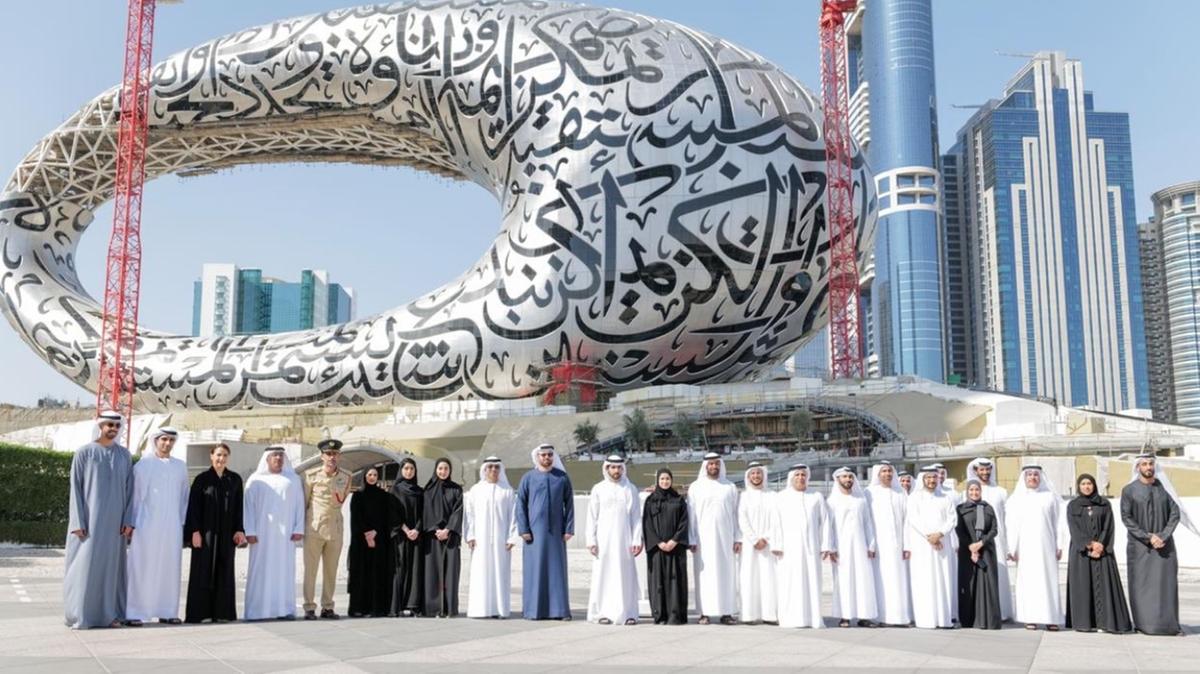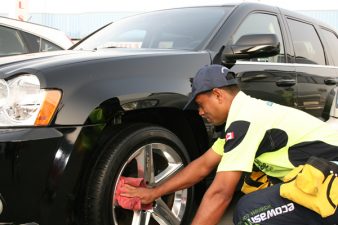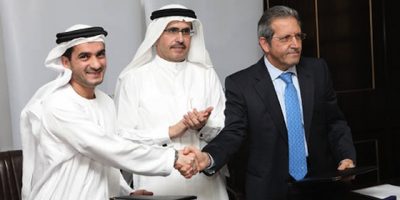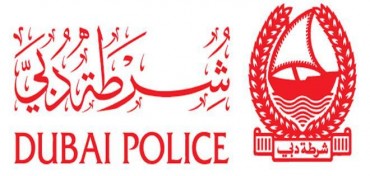Construction has begun in Dubai on the $136-million Museum of the Future. Tucked between skyscrapers in Dubai’s financial district, just a seven-minute drive from the tallest building in the world, the Burj Khalifa, it will be more than an exhibition hall, cafe and gift shop.
Special “innovation labs” will be included where researchers and designers will work towards its official motto, “See the Future, Create the Future”. But will that future be sustainable?
UAE Prime Minister Sheikh Mohammed Bin Rashid Al Maktoum said the museum will be “a destination for the best and brightest inventors and entrepreneurs.”
His government has proclaimed 2015 the “Year of Innovation,” investing aggressively in technology, and the private sector is jumping aboard with UAE telecommunications company Du recently partnering with the Massachusetts Institute of Technology’s Senseable City Lab to explore how technology can enhance the cities of the future.
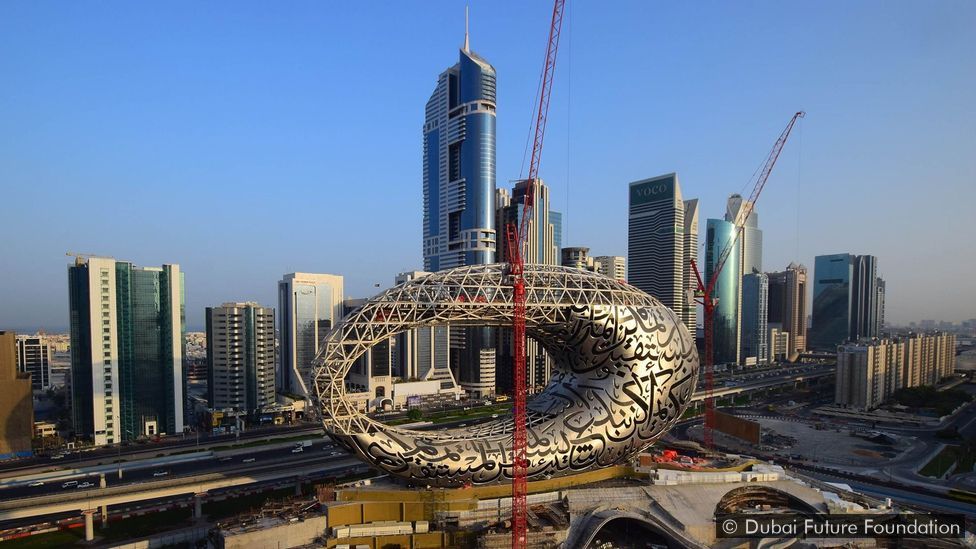
The Sheikh explained, “The future belongs to those who can imagine it, design it, and execute it. Here in the UAE we think differently. While others try to predict the future, we create it.”
The Museum of the Future will open in 2017. Update 2020: Here is the website. Initial press releases were image-heavy, with glossy artist renderings of an elliptical doughnut, standing on edge. The structure’s center will hold a holographic billboard which will broadcast news on museum exhibits which will include robots, holograms, and laser technology – at least according to those press photos.
Fully sheathed in silvery metal, lines of poetry penned by the Sheikh repeats in patterns across its exterior, according to a report from The Wall Street Journal.
Daylight enters the building through that punctured facade. And while increased interior daylighting in a cornerstone of sustainable design, seems you could fry falafel on those sun-heated steel surfaces. And how will the shiny exterior deflect sun rays? It could make London’s car-melting “Walkie Talkie” … Take this inside, how have the engineers handled the resulting heat load to museum interiors? A month after groundbreaking – there is no publicly available information on how the building will perform environmentally.
The history of Dubai
Dubai is a part of the seven Emirates that make up United Arab Emirates or (UAE). Dubai was built from a small fishing village on the Persian Gulf. The small Kingdom had discovered oil. Since then the village has became one of the most important cities in the Middle East and well known around the world.
The Royal family who rule over Dubai knew they had to act fast to find another way to make revenue for Dubai. The ruler of Dubai made the city a household name by making it into the city built on investments from all over the Middle East and around the world. These new investments in the city helped make Dubai what it is today, and what it will become in the future.
In just a short amount of time Dubai has grown rapidly and new buildings are being planned and built. When beachfront land was needed the investors came up with an idea to build islands to make more building space.
It can be said that Dubai is at a time in its life where it is having a very big building boom buildings are popping up all over the city. Some of the buildings have been designed in a more modern look and others have been designed in a traditional way. As Dubai continues its building boom it has begun to focus on constructing buildings that can be more sustainable.
As an example, sustainable construction saves more water in a place like Dubai where water is precious. Using the sun to help make energy for the buildings would ensure the city does not have to burn more fuel that causes air pollution but use clean way to provide energy.
The questions that may be asked is can a city like Dubai become more sustainable? The answer is yes it can. Dubai has goal of becoming one of the top ten sustainable cities in the world by 2020.
In 2010 the goal came alive and started with government buildings, all 40 of which were abiding by the new law by the time it was rolled out across the country at the start of 2014.
Having new rules and regulations in building standards help to make sure the city is built in a more sustainable way. These codes of building have been proven to help create a city that has less of an impact on the environment by causing less of a carbon footprint.
The motto for the building is “See the future, create the future.” It strives to unite inventors, designers, and researchers for collaboration on technologies, including automobiles, robotics, genetics, and more.
The Museum of the Future is the latest in a burst of superlative projects from the UAE capital, which range from plans to erect the world’s tallest twin towers to designs for an Aladdin-inspired city in the oldest section of Dubai to the world’s largest shopping mall slated to debut at Expo 2020. The museum will stand adjacent to the Emirates Towers on Sheikh Zayed Road. The architect has not yet been announced.
The WSJ notes that Dubai is funneling increasing amounts of money into technology innovation, including funding competitions such as “Drones for Good” — a $1 million prize to find humanitarian uses for drones that was won by a collision-proof search-and-rescue model from Switzerland.
a few of these drones bumping around the interior of the Museum of the Future wouldn’t go amiss, but Dubai will need to showcase more than just foreign technology to live up to its grand claims.

